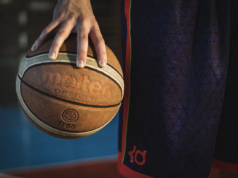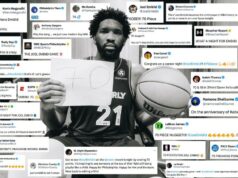This is the first in a three-part look at the big men the Spurs had during each of their championship seasons. A main focus for the Spurs this season was improving their frontcourt, and this will allow us to compare the current frontcourt to previous ones. Today we will look at the 1999 and 2003 championship teams.
1999
The Spurs first championship came behind the Twin Towers – David Robinson and Tim Duncan. The two jelled immediately and combined to become the Spurs most productive frontcourt to date. Duncan was a second year player, averaging 21.7 points, 11.4 rebounds and 2.5 blocks. Robinson was just one year removed from a 20-10 season, and he averaged over 15 points and 10 boards in 1999.
However, the Spurs frontcourt this season was different from any other championship season. Robinson and Duncan were both All-NBA talents and the best players on the team. Everything, both offensively and defensively, ran through the two, especially defensively. Robinson was still an elite post defender, and Duncan was a First Team defensive player. Together they anchored one of the best defensive teams in history, holding teams to 40.2% shooting and 84.7 points per game.
What also makes this frontcourt different is its lack of depth. After Duncan and Robinson, who combined to play 71 of the possible 96 minutes at the power forward and center positions, the Spurs relied on Malik Rose and Will Perdue. This was before Rose was good for 10 points and 6 boards, and Perdue was…Will Perdue. Enough said. Essentially the Spurs were using two players to man the post.
Still, one could argue that this was the Spurs best group of big men solely because of how good Duncan and Robinson were. The two set the blueprint for future Spurs teams, especially on the defensive end. The Spurs spent the next few years searching for another 7-footer to play next to Duncan who could rebound and block shots when opponents were funneled into the paint. This differs somewhat from what the Spurs have done recently with players like Robert Horry or Matt Bonner.
Production from PF and C
For 2003 and later these numbers will come from 82games.com. However, they don’t have statistics compiled for 1999, so I’m assuming that Tim Duncan, David Robinson, Malik Rose and Will Perdue were the PF and C for the team since they combined for 96 minutes. This makes comparing statistics a little off but it’s a good jumping off point. All other statistics are from BasketballReference.com.
| PTS | 45.9 |
| % of Team PTS | 49.5% |
| RBS | 29 |
| % of Team RBS | 66% |
| Blocks | 5.7 |
| FG% | 50% |
| % of Team FGA | 42.8% |
2003
Duncan, Robinson and Rose were all still around, so the big men were very similar to the ones in 1999. Kevin Willis and occasionally Danny Ferry also saw time at power forward and center. Even though the personnel was similar to four years earlier, there were obvious differences between how the big men played.
This was Robinson’s last year and his attention had moved almost exclusively to defensive; it was the only season that he averaged less than 10 points per game. His minutes also dropped to 26 per game and the Spurs stopped calling plays for him. Now his 8.5 points were coming from rebounds and playing off the ball since teams were focusing more on Duncan.
Rose saw his minutes increase to 24 per game and he responded with his best season as a pro, averaging 10 points and 6 rebounds. While he was undersized and never blocked many shots, Rose was a tenacious defender and became a fan favorite because of his hustle.
Willis and Ferry also contributed in the post throughout the season, with Ferry also spending time at small forward. Both players were at the end of their careers at this point. Willis, with his bad knees bulkily wrapped, contributed a few points and rebounds per game, and Ferry occasionally knocked in a three. However, neither played significant minutes, roughly 10 per game, and saw those minutes decrease to around five during the playoff.
This was one of Duncan’s best seasons and he won one of his MVP awards. The Spurs were a younger team with a second year point guard and an unorthodox rookie named Manu Ginobili, a team that not many expected to win a title. Duncan responded with 23 points, 13 rebounds and 2.9 blocks.
Even though Robinson was not the same type of player that he was in 1999, he was still a premier defender and rebounder. Rose was also a reliable post player. With those two splitting minutes and Duncan playing some of the best basketball of his career, the Spurs big men were still an elite defensive unit. The individual scoring abilities were lower than in 1999 but they had more depth to call upon.
| PTS | 44.1 |
| % of Team PTS | 41.9% |
| RBS | 28.5 |
| % of Team RBS | 67% |
| Blocks | 4.9 |
| FG% | 50% |
| % of Team FGA | 44.8% |
Bottom Line
These two units of big men performed similarly, which isn’t a shock considering that Duncan, Robinson and Rose were the main components of each. The biggest difference came in how the minutes and points were distributed among the big men. In 1999, Duncan and Robinson were the only real big men the Spurs had. In 2003, Robinson’s role was significantly diminished and Rose was now a key part of the team. Looking at the numbers, the 1999 unit were better offensively, largely due to the fact that Robinson was still an elite player. Defensively they were similar. Robinson didn’t have as many blocks in 1999 but he still could match up with Shaq and other big men around the league. The 2003 group had more depth but it’s hard to say that they were better than the 1999 group solely because of how good Robinson and Duncan were together than season.





